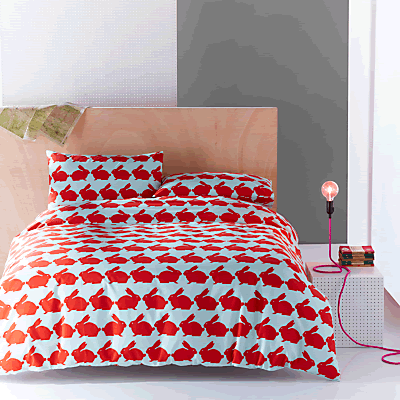A duvet is a cover for a bed, much like a comforter. There are a few differences, however. The primary difference is that a duvet is made to be used with a cover of some sort. Much like a pillowcase covers a pillow, duvet covers go over the actual duvet to protect it and to match the bedroom decor. The cover is easily removed for cleaning or changing.
A duvet is constructed much like a quilt–two layers of fabric with a filling in between the layers. The three layers are then stitched together. Unlike quilts, however, a duvet is constructed to be used as a single bedcover. It replaces multiple layers of sheets, blankets, quilts, etc. that are used to keep warm while sleeping. Unless one is living in an extremely cold climate, a single duvet should keep a sleeper toasty warm in the winter months. In addition, the single layer results in quickly and easily making the bed every morning.
Duvets are made of a variety of materials. The outer shell is usually made of cotton, although silk or silk/cotton blends are sometimes used. A high thread count in the outer fabric is preferable, as the fine filler can make its way through the threads of lower-count fabrics. So, the higher the thread count on the outer fabric, the better. Keep in mind, however, that a high thread count does not necessarily mean high quality. If the manufacturer of the fabric uses very fine threads, the fabric won’t be as durable and the duvet may suffer wear and tear in a short period of time.
The filler of a duvet is probably the most important factor you’ll want to consider. It should be natural, whenever possible. The filling is what provides the warmth of a duvet. Natural fill is always preferred, as it allows for breathability and warmth. A variety of synthetic fills are also available for those who suffer from allergies. Natural fillers include feathers, cotton, silk, or even wool. The best filler, however, is down. It tends to be lighter and fluffier while remaining breathable. Down also maintains a high Tog rating.
The Tog is the rating used to determine the warmth of a duvet. The higher the number, the warmer the duvet will be. If the climate is warm, a Tog rating of five or less would be appropriate. If the climate is colder, a Tog higher than six is advised.
Another consideration is the actual construction of the duvet. Two of the many choices are box or channel construction. In box construction, the seams create a checkerboard of filled pockets. This keeps the filling firmly in place. In channel construction, the evenly spaced seams run the length of the duvet allowing the fill to move within the channels. So, for instance, if you get cold feet, you can move more fill to the bottom of the duvet to keep them warm.
A duvet is a wonderful, versatile investment. With proper care, it can last for many years. To help maintain the life of your duvet, it is advisable to use it with a cover. There are many styles, colors, and designs to choose from. The most difficult decision when choosing a duvet, might just be picking out the right cover!



This is truly helpful, thanks.